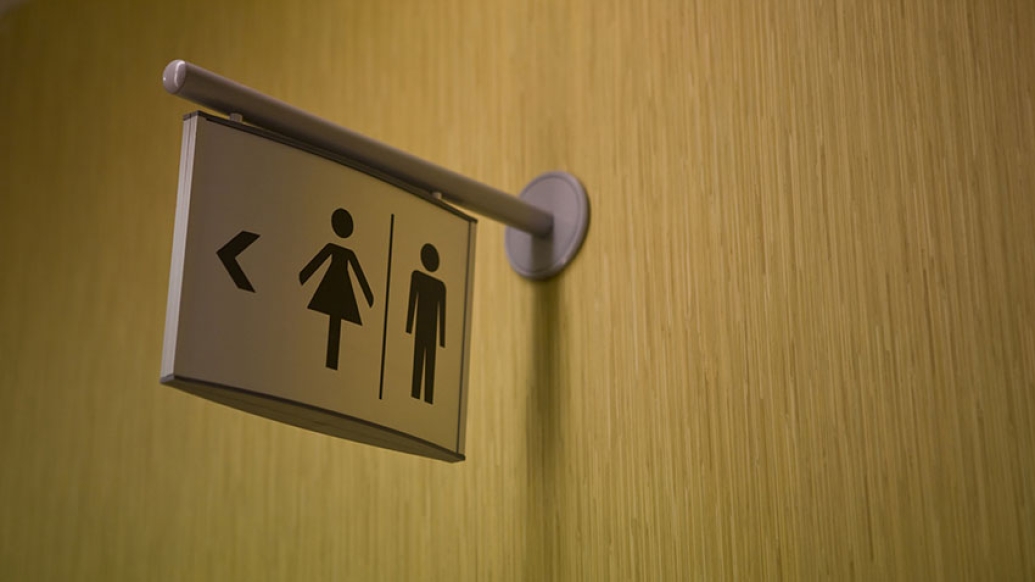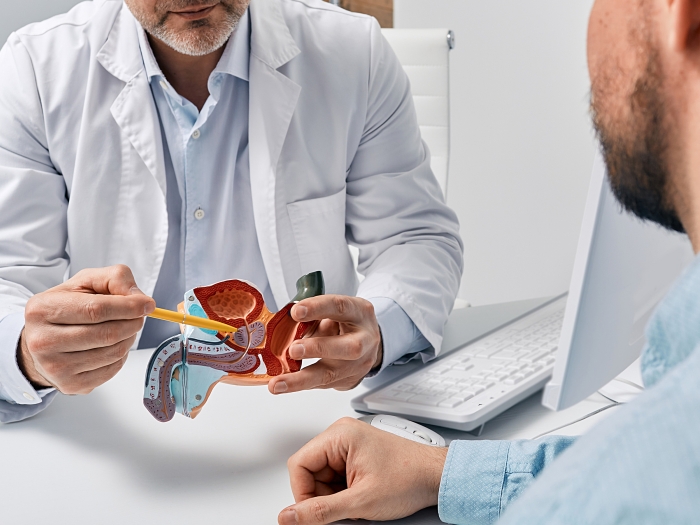Many diagnosed with Parkinson’s disease experience urinary tract issues. A Michigan Medicine urologist discusses treatment options for patients to consider.
5:00 AM
Author |

Anne Pelletier-Cameron, M.D., often jokes to her patients that she's a female plumber of the lower urinary tract. On a more professional note, however, she's a urologist in the Michigan Medicine Department of Urology.
In this role, Pelletier-Cameron treats patients with a variety of lower urinary tract symptoms. Some of her patients have been diagnosed with Parkinson's disease, a progressive nervous system disorder that impacts movement. But the breakdown of nerve cells that characterize Parkinson's disease can also cause "non-movement" symptoms, including bladder issues.
"Half of all women and 17% of men will experience urinary incontinence, or the inability to hold urine," she says, noting that for Parkinson's disease patients, those numbers escalate.
"Many of my PD patients end up having other bladder problems, including issues with urgency and frequency," says Pelletier-Cameron. Nocturia, or the need to urinate many times during the night, is also common, along with difficulty in emptying the bladder.
MORE FROM MICHIGAN: Sign up for our weekly newsletter
"The bladder is very complicated," says Pelletier-Cameron. "It needs to be big enough to store urine so you can go about your life without having to empty your bladder every 10 minutes. It also needs to store urine at low pressure and squeeze at the right time to make sure the urine doesn't back up to the kidneys."
For PD patients, bladder issues are often due to fluctuations in dopamine levels affecting the bladder muscles and nerves, which are critical to how it functions. PD is also thought to impact the nerve pathway between the bladder and the area of the brain that controls bladder function.
Pelletier-Cameron says the impact of bladder symptoms can't be ignored.
"Lower urinary tract symptoms can negatively impact a patient's quality of life." They can also lead to a greater number of falls, added burden on caregivers, a decrease in the desire to socialize and a greater chance of being placed in a nursing home for care.
Bladder problems can be exacerbated by other health concerns, as well, says Pelletier-Cameron, including prostate enlargement issues and problems with mobility. "They all add up to conspire against you."
Diagnosing the Symptoms
Diagnosing lower urinary tract symptoms begins with a patient history.
"We want to know when the problems began. We then conduct a physical exam to rule out other potential causes of bladder problems," says Pelletier-Cameron.
Tests may include:
-
Urinalysis to check the urine for signs of a medical condition or disease.
-
Ultrasound residual to detect remaining urine in the bladder.
-
Voiding diary to help a doctor understand abnormal voiding patterns.
"Occasionally, we need to do more testing," Pelletier-Cameron says, including urodynamics to test how well the bladder, sphincters and urethra hold and release urine, or a cystoscopy to test for diseases of the bladder and urethra.
Treating the Condition
Lower urinary tract symptoms can be treated in several ways, including behavioral methods, medical management or surgery.
Pelletier-Cameron begins with conservative behavioral methods. "Many of these methods are low risk and can help significantly," she says.
Conservative treatment includes:
-
Timed voiding, which involves urinating on a set schedule, with the time between bathroom trips gradually extended.
-
Bladder retraining/urge suppression to train the bladder to hold for longer periods of time, allowing it to increase in size.
-
Pelvic floor physical therapy, including the Knack maneuver and Kegel exercises.
"These exercises for men and women can increase the strength of your pelvic floor and reduce bladder leakage," says Pelletier-Cameron.
Certain foods and beverages can aggravate an overactive bladder, says Pelletier-Cameron. These include spicy foods, caffeine, alcohol, artificial sweeteners and diuretics (water pills), which she recommends managing or avoiding altogether if you have bladder issues.
Medical management
Second line therapy for Parkinson's disease patients with bladder issues is medical management, says Pelletier-Cameron.
Multiple drugs, including VESIcare and Ditropan, are available to treat bladder issues. However, Pelletier-Cameron warns about the side effects of many of these medications such as dry eyes and mouth, constipation, upset stomach, memory problems and aggravated Parkinson's symptoms.
"Newer medications, including Mirabegron, an oral beta-3 agonist, have proved successful in treating PD bladder issues," she says. "It is well-tolerated except for those with very high blood pressure."
LISTEN UP: Add the new Michigan Medicine News Break to your Alexa-enabled device, or subscribe to our daily updates on iTunes, Google Play and Stitcher.
Surgical procedures
For Parkinson's patients whose bladder symptoms are not managed with conservative treatment or medicine, surgery may be an option, says Pelletier-Cameron. Surgical options include:
-
InterStim, which is a small device, similar to a pacemaker, implanted just beneath the skin of the pelvis. The stimulator device emits mild electrical pulses that target an area near the sacral nerves, the group of nerves at the base of the spine responsible for urinary function. The device modulates neural activity controlling the bladder.
-
Percutaneous tibial nerve stimulation, which is an office procedure that provides electrical stimulation to control bladder function. During the procedure, the foot is elevated and an acupuncture needle electrode is placed near the nerve at the ankle, known as the tibial nerve. A stimulator is connected to the electrode and sends mild electrical pulses to the tibial nerve. The impulses then travel to the sacral nerve area, where bladder function is controlled.
"The percutaneous tibial nerve stimulation is a very popular choice with good outcomes and is very low risk," says Pelletier-Cameron.
Botox injections are also FDA-approved for urgency and urgency incontinence bladder issues. During this procedure, a small scope is passed inside bladder and the bladder wall is injected with Botox through tiny needles.
WATCH: Dr. Pelletier-Cameron's presentation on Parkinson's Disease and the Bladder
"Patients do quite well with Botox injections, although urinary tract infections are a common side effect," Pelletier-Cameron says.
While many patients with Parkinson's disease experience bladder issues, Pelletier-Cameron says these issues don't have to keep them housebound. In fact, she says, "Everyone can improve the health of their bladder by voiding on a schedule, drinking mainly water or non-caffeinated beverages and learning Kegel exercises." Some medications or minor procedure can also help, she adds.
"Getting the right treatment or therapy can improve the quality of life in a significant way for PD patients," Pelletier-Cameron says. "The key is to have an open discussion with your healthcare provider about the best option for your specific symptoms."

Explore a variety of healthcare news & stories by visiting the Health Lab home page for more articles.

Department of Communication at Michigan Medicine
Want top health & research news weekly? Sign up for Health Lab’s newsletters today!





